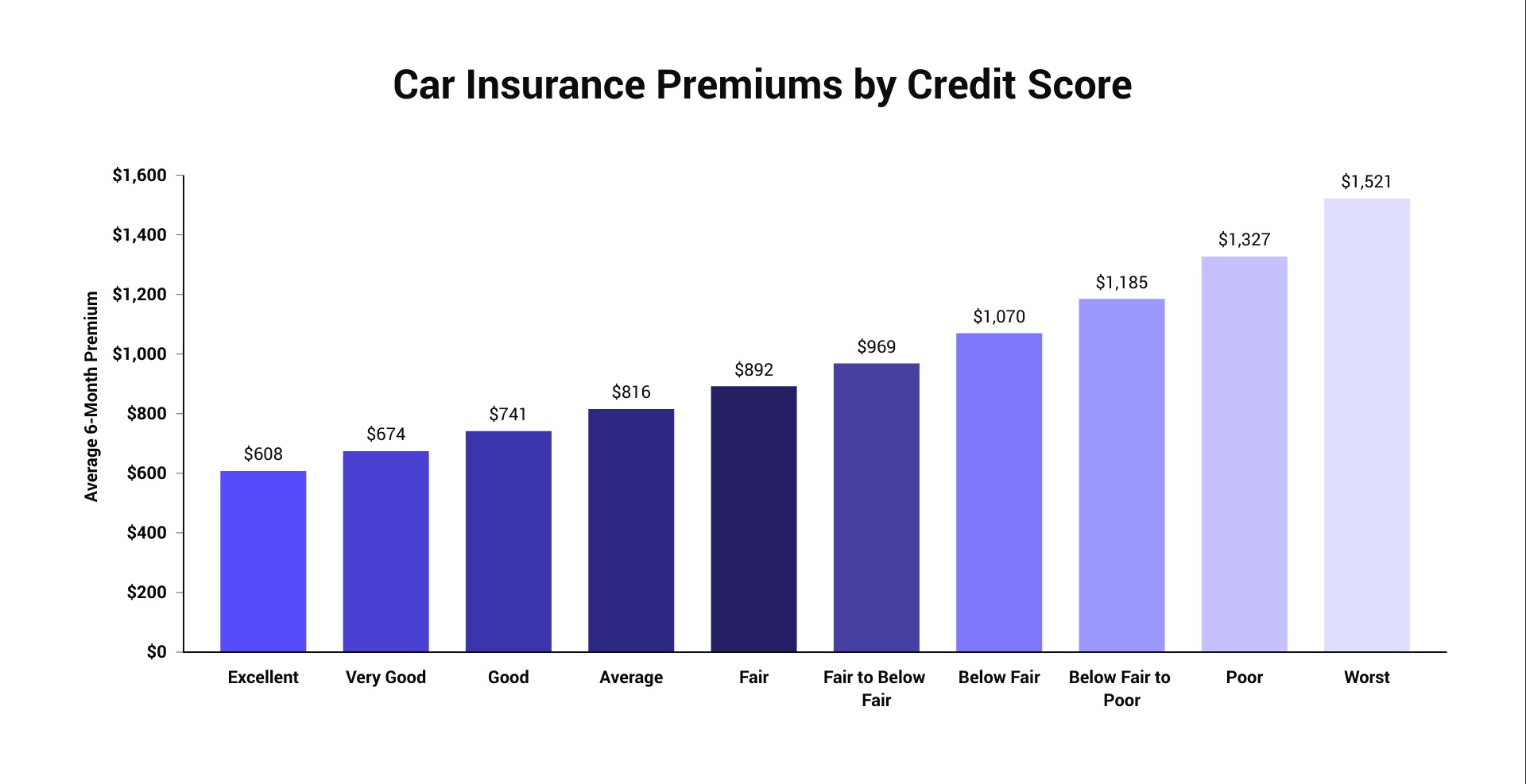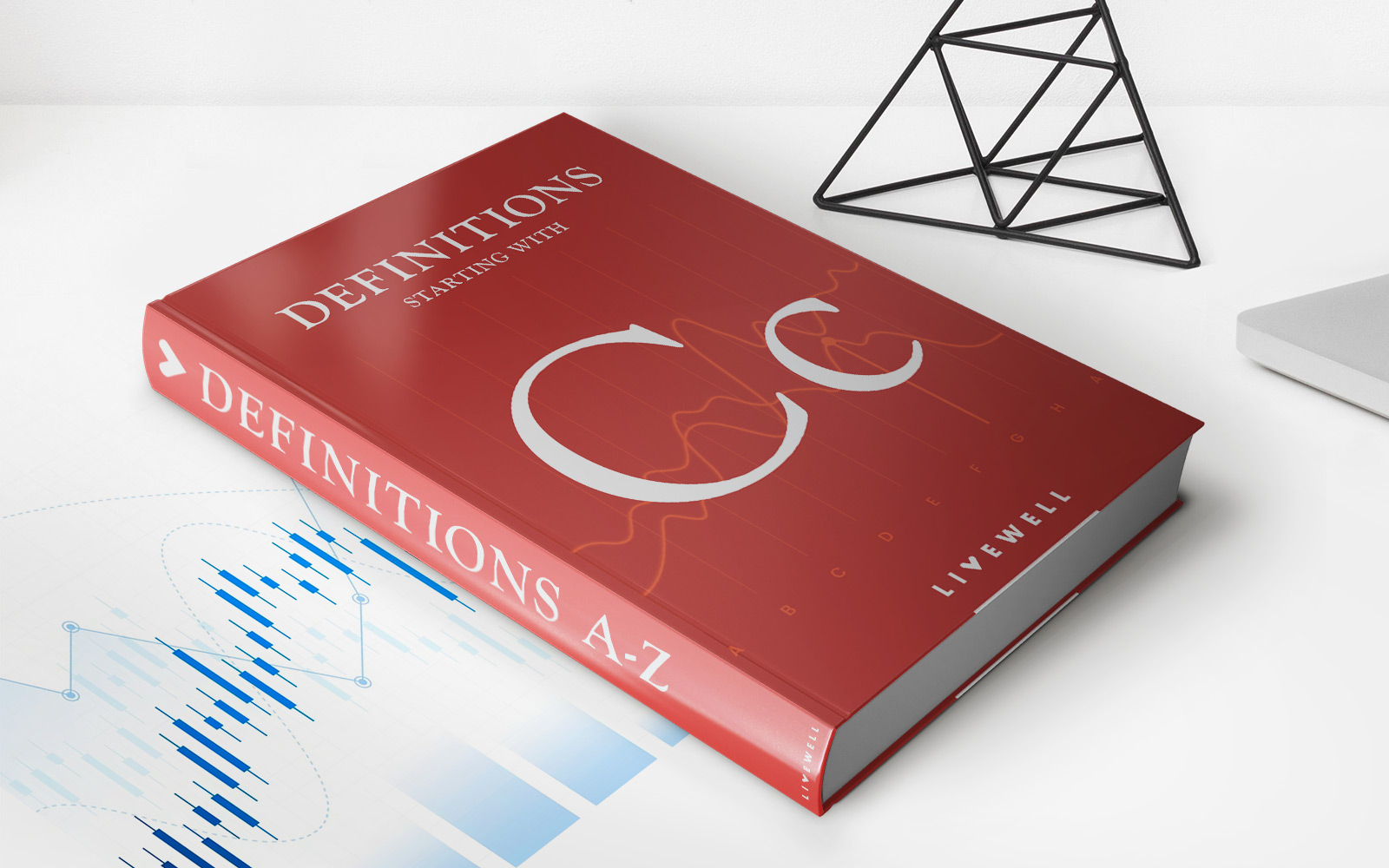Home>Finance>How Much Does It Cost To Add A 16-Year-Old To Car Insurance?


Finance
How Much Does It Cost To Add A 16-Year-Old To Car Insurance?
Published: November 19, 2023
Find out the cost of adding a 16-year-old to your car insurance and manage your finances wisely. Don't overspend on premiums, get the information you need here.
(Many of the links in this article redirect to a specific reviewed product. Your purchase of these products through affiliate links helps to generate commission for LiveWell, at no extra cost. Learn more)
Table of Contents
- Introduction
- Factors Affecting the Cost of Adding a 16-Year-Old to Car Insurance
- Teenage Driver Statistics and Risks
- Types of Coverage for a Teenage Driver
- Traditional Car Insurance Rates for 16-Year-Olds
- Specific Costs for Adding a 16-Year-Old to Car Insurance
- Discounts and Ways to Save Money When Adding a 16-Year-Old to Car Insurance
- Tips for Reducing Premiums When Insuring a 16-Year-Old
- Conclusion
Introduction
Adding a 16-year-old to car insurance can be a significant expense for many families. Teenage drivers are considered high-risk drivers due to their limited driving experience and higher likelihood of accidents. Insurance companies take these factors into consideration when determining the cost of adding a young driver to an existing policy or purchasing a separate policy for them.
It’s important for parents and guardians to understand the various factors that can impact the cost of insuring a 16-year-old and explore ways to minimize the financial burden. This article will delve into the factors affecting the cost of adding a 16-year-old to car insurance and provide tips for saving money on premiums.
While insurance costs may vary depending on the location and specific circumstances, having a thorough understanding of how insurers calculate premiums can help parents make informed decisions.
Factors such as the teenager’s driving record, the type of car they will be driving, the coverage options chosen, and any applicable discounts can all influence the cost of insuring a 16-year-old. It’s essential to consider these factors and explore options for reducing premiums without compromising on coverage.
Additionally, understanding the risks associated with teenage drivers can shed light on the importance of adequate insurance coverage. Teenagers have a higher likelihood of being involved in accidents, which makes having comprehensive insurance coverage all the more crucial.
By considering these factors and exploring various options, parents can navigate the cost of adding a 16-year-old to car insurance more effectively, ensuring that their young driver is adequately protected without breaking the bank.
Factors Affecting the Cost of Adding a 16-Year-Old to Car Insurance
Several factors can influence the cost of adding a 16-year-old to car insurance. Understanding these factors can help parents anticipate the potential financial impact and make informed decisions when it comes to insuring their teenage driver. Here are the key factors to consider:
- Age and Driving Experience: Insurance companies consider teenagers to be high-risk drivers due to their inexperience behind the wheel. As a result, premiums for teenage drivers are typically higher than those for more experienced drivers.
- Driving Record: A clean driving record is essential for obtaining affordable car insurance rates. However, since 16-year-olds have limited driving experience, it’s common for insurance premiums to be higher. If a teenager has any driving violations or accidents on their record, it can further increase the cost of insurance.
- Location: Insurance rates can vary based on where the insured vehicle will be primarily driven and garaged. Areas with higher accident rates or higher rates of auto theft can lead to increased insurance premiums.
- Type of Car: The type of car a teenager will be driving can have a significant impact on insurance costs. Sports cars and high-performance vehicles are generally more expensive to insure than sedans or SUVs. Additionally, newer cars or those with advanced safety features may qualify for discounts.
- Coverage Options: The level of coverage chosen for the teenage driver will impact the cost of insurance. Comprehensive and collision coverage provide additional protection but come with higher premiums. It’s important to strike a balance between adequate coverage and affordability.
- Usage: How often and for what purposes the teenager will be driving the car can affect insurance rates. If the vehicle will be used for daily commuting or long trips, the premiums may be higher compared to occasional or pleasure use.
- Multi-Policy Discounts: Some insurance companies offer discounts for bundling multiple policies, such as homeowners and auto insurance. Adding a young driver to an existing policy may qualify for this discount.
- Good Student Discounts: Many insurers offer discounts for students who maintain good grades. A teenager’s academic performance can have a positive impact on insurance premiums.
- Driver’s Education: Completion of a state-approved driver’s education program can lead to lower insurance rates. These programs equip teenagers with essential driving skills and provide a certification that insurers may consider when determining premiums.
It’s crucial to discuss these factors with insurance providers and explore potential discounts or ways to reduce premiums while maintaining adequate coverage for the teenage driver. Taking the time to compare quotes from different insurers can also help parents find the best insurance policy for their 16-year-old at a competitive price.
Teenage Driver Statistics and Risks
When it comes to adding a 16-year-old to car insurance, it’s important for parents to be aware of the driving statistics and risks associated with teenage drivers. Understanding these facts can emphasize the need for comprehensive insurance coverage and encourage safe driving habits. Here are some key statistics and risks to consider:
- Inexperience: One of the primary risk factors for teenage drivers is their limited driving experience. According to the National Highway Traffic Safety Administration (NHTSA), teenagers are more likely to be involved in car accidents within the first few years of obtaining their driver’s license.
- Distracted Driving: The use of mobile phones while driving is a significant concern among teenage drivers. Studies have shown that young drivers are more prone to texting or using their phones while behind the wheel, which increases the risk of accidents.
- Speeding: Teenagers have a tendency to engage in risky behaviors while driving, with speeding being one of the most common. The need for speed combined with inexperience can lead to serious accidents and higher insurance premiums.
- Drinking and Driving: Alcohol-impaired driving is a major risk among teenage drivers. Statistics from the Centers for Disease Control and Prevention (CDC) show that one in five teenagers involved in fatal crashes had alcohol in their system.
- Seat Belt Usage: Teenagers have been found to have lower rates of seat belt usage compared to older drivers. Not wearing a seat belt significantly increases the risk of injury or death in the event of an accident.
- Peer Influence: Teenagers are more susceptible to peer influence, which can lead to risky behaviors while driving. The presence of friends in the car can distract the driver and increase the likelihood of accidents.
These statistics highlight the importance of having comprehensive insurance coverage for teenage drivers. Parents should consider higher coverage limits and additional protection, such as collision and comprehensive coverage, to ensure that their 16-year-old is adequately protected on the road.
Furthermore, parents play a crucial role in instilling safe driving habits in their teenagers. Setting clear rules and boundaries, providing ongoing education and guidance, and leading by example can help reduce the risks associated with teenage driving.
By being aware of the statistics and risks, parents can prioritize safety and take the necessary steps to protect their 16-year-old driver both on and off the road. Adequate insurance coverage, coupled with responsible driving behavior, can provide peace of mind for parents and protect their teenage drivers in the event of an unfortunate accident.
Types of Coverage for a Teenage Driver
When adding a 16-year-old to car insurance, it’s essential to understand the different types of coverage available to ensure that the teenage driver is adequately protected on the road. Here are the key types of coverage options for teenage drivers:
- Liability Coverage: Liability coverage is mandatory in most states and covers the cost of damages or injuries caused to others in an accident where the teenage driver is at fault. This coverage helps protect the teenager’s assets and future earnings in the event of a lawsuit.
- Collision Coverage: Collision coverage pays for damages to the insured vehicle in the event of a collision with another vehicle or object, regardless of who is at fault. It is particularly important for teenage drivers who may be more prone to accidents due to their inexperience.
- Comprehensive Coverage: Comprehensive coverage provides protection against non-collision events such as theft, vandalism, fire, or natural disasters. Including this coverage ensures that the teenage driver’s vehicle is protected from various risks beyond accidents.
- Uninsured/Underinsured Motorist Coverage: This coverage protects the teenage driver if they are involved in an accident with an uninsured or underinsured driver. It helps cover medical expenses and damages when the at-fault driver does not have sufficient insurance to pay for the losses.
- Medical Payments Coverage: Medical payments coverage, also known as personal injury protection (PIP), covers medical expenses for the teenage driver and passengers in the insured vehicle, regardless of fault. It can help alleviate the financial burden of medical bills resulting from an accident.
- Rental Reimbursement Coverage: Rental reimbursement coverage ensures that the teenage driver has access to a rental car while their own vehicle is being repaired or replaced due to a covered claim.
- Gap Insurance: Gap insurance covers the difference between the amount owed on a vehicle loan or lease and the actual cash value of the vehicle at the time of a total loss. This coverage can be beneficial for teenage drivers who may have financed or leased their vehicle.
- Additional Named Driver Exclusion: In some cases, parents may choose to exclude the teenage driver from their policy to save on premiums. However, this also means the teenage driver will not have any coverage under the parent’s policy. It’s important to weigh the risks and consider individual circumstances before opting for this exclusion.
When adding a 16-year-old driver to car insurance, it is important to consult with an insurance agent to understand the specific coverage options available and determine the right level of protection for the teenage driver’s needs. Striking a balance between adequate coverage and affordability ensures that both the teenager and their vehicle are protected on the road.
Traditional Car Insurance Rates for 16-Year-Olds
When it comes to insuring a 16-year-old driver, it’s no secret that car insurance rates can be higher compared to more experienced drivers. Teenagers are considered high-risk drivers due to their limited driving experience and increased likelihood of accidents. Here is a breakdown of traditional car insurance rates for 16-year-olds:
- Average Cost: On average, adding a 16-year-old to car insurance can increase premiums by as much as 100% to 200%. This significant increase is due to the high-risk nature associated with teenage drivers.
- Gender Differences: Statistically, male teenage drivers tend to have higher insurance rates compared to their female counterparts. Male teenagers are often considered riskier drivers based on accident statistics and may face higher premiums as a result.
- State Variations: Car insurance rates for 16-year-olds can vary significantly depending on the state. Factors such as the state’s minimum coverage requirements, accident rates, and insurance regulations can influence the cost of coverage for teenage drivers.
- Vehicle Type: The type of car a 16-year-old driver will be operating can impact insurance rates. Sports cars, luxury vehicles, or models with high-performance capabilities generally have higher insurance premiums due to their increased risk profile.
- Driving Record: While 16-year-olds have limited driving experience, those with a clean driving record may be eligible for lower insurance rates. Avoiding accidents, traffic violations, and citations can help reduce insurance costs for teenage drivers.
- Discount Opportunities: Insurance providers often offer discounts to help offset the higher rates for 16-year-olds. Examples of available discounts include good student discounts, driver’s education discounts, and discounts for completing a safe driving course.
- Multiple Policy Discounts: Bundling the teenager’s car insurance with other policies, such as homeowners insurance, can lead to premium discounts. These multi-policy discounts can help reduce the overall cost of adding a 16-year-old driver to car insurance.
It’s important to note that the specific insurance rates for a 16-year-old driver will depend on various factors, including the teenager’s driving record, location, vehicle type, and coverage options chosen. Shopping around for quotes from different insurance providers can help parents find the coverage that offers the best value for their teen driver’s specific needs.
While car insurance premiums for 16-year-olds can be higher, parents can explore options for reducing costs by taking advantage of available discounts, maintaining a clean driving record, and choosing the right coverage options that strike a balance between protection and affordability.
Working with an insurance agent who specializes in insuring young drivers can provide valuable insights and guidance in navigating the complexities of the insurance market, ultimately helping parents find the most suitable and cost-effective coverage for their 16-year-old.
Specific Costs for Adding a 16-Year-Old to Car Insurance
Adding a 16-year-old to car insurance can result in significant costs for families. The specific expenses involved will depend on various factors, including the state of residence, insurance provider, coverage options, and the teenager’s driving record. Here are some of the specific costs to consider:
- Premium Increase: Adding a 16-year-old to car insurance typically results in a substantial increase in premiums. On average, insurance rates can double or even triple when a teenager is added to the policy.
- Age-Based Surcharge: Many insurance companies apply an age-based surcharge to policies that include teenage drivers. This surcharge reflects the higher risk associated with younger and less experienced drivers.
- Vehicle Type: The type of vehicle the 16-year-old will be driving can impact insurance costs. Sports cars, luxury vehicles, or models with high horsepower will generally have higher insurance premiums compared to more economical and less powerful cars.
- Good Student Discount: On a positive note, many insurance providers offer a good student discount to teenagers who maintain a certain grade point average (GPA). This discount can help offset some of the premium increase.
- Driver’s Education: Completing a state-approved driver’s education course can lead to lower insurance rates. These courses provide valuable training for young drivers and are often rewarded with discounted premiums.
- Multi-Car Discount: If the 16-year-old will be driving a separate vehicle, a multi-car discount may be applied when adding their vehicle to the policy. This discount can help reduce the overall insurance expenses for the family.
- Deductibles: Adjusting deductibles on the policy can impact costs. Higher deductibles mean lower premiums but come with the risk of higher out-of-pocket expenses in the event of a claim.
- Usage-Based Insurance: Some insurance providers offer usage-based insurance programs that track the driving habits of the 16-year-old through a telematics device. Safe driving behavior can result in discounts on premiums.
It’s important to note that the specific costs for adding a 16-year-old to car insurance will vary based on individual circumstances. It’s recommended to contact insurance providers directly to get personalized quotes and understand the potential financial impact.
While insurance rates for teenage drivers can be high, it’s important not to compromise on coverage. Adequate insurance protection is crucial to safeguard the 16-year-old driver and other parties involved in the event of an accident. By exploring available discounts and comparing quotes from different insurers, families can find the most cost-effective way to provide the necessary coverage for their teenager.
Discounts and Ways to Save Money When Adding a 16-Year-Old to Car Insurance
Adding a 16-year-old to car insurance can be a financial burden for families, but there are several discounts and strategies that can help save money. Here are some ways to potentially reduce the costs:
- Good Student Discount: Many insurance providers offer a good student discount for teenagers who maintain good grades. Make sure to provide proof of your teenager’s academic achievement to take advantage of this potential discount.
- Driver’s Education: Completing a state-approved driver’s education program can help reduce insurance premiums. These courses educate young drivers on safe driving practices and often result in discounted rates.
- Usage-Based Insurance: Consider opting for a usage-based insurance program that tracks driving behavior through a telematics device. Safe driving habits, such as obeying speed limits and avoiding sudden braking, can lead to lower premiums based on the driver’s actual performance.
- Multi-Policy Discount: If you have multiple insurance policies, such as homeowners or renters insurance, consider bundling them with your car insurance. Many insurers offer multi-policy discounts that can lead to significant savings.
- Choose a Safe and Reliable Vehicle: The type of vehicle your 16-year-old will be driving can impact insurance costs. Opting for a safe and reliable car with good safety ratings and less powerful engine can help reduce premiums.
- Keep a Clean Driving Record: Encourage your teenager to practice safe driving habits and avoid traffic violations. A clean driving record will keep insurance premiums lower over time.
- Explore Deductibles: Increasing the deductibles on your policy can lower your premiums. However, it’s important to weigh the potential savings against the out-of-pocket expenses you would have to pay in the event of a claim.
- Shop Around for Quotes: Don’t settle for the first quote you receive. Take the time to compare rates from multiple insurance providers to ensure you’re getting the best value for your money.
It’s crucial to communicate with your insurance agent and discuss the available discounts and strategies specific to your insurance provider. They can provide tailored advice and help identify additional cost-saving opportunities for adding a 16-year-old to your car insurance.
Remember, while cost-saving measures are important, it’s equally vital to ensure that your 16-year-old is adequately covered with the necessary insurance protection. Balancing affordability with sufficient coverage will provide you with peace of mind and protect your teenager on the road.
Tips for Reducing Premiums When Insuring a 16-Year-Old
Insuring a 16-year-old driver can be costly, but there are several tips and strategies you can employ to help reduce insurance premiums. Here are some effective ways to potentially lower the cost of insuring a 16-year-old:
- Encourage Safe Driving Habits: Emphasize the importance of safe driving to your teenager. Encourage them to obey traffic laws, avoid distractions, and practice defensive driving techniques. A clean driving record will help keep insurance premiums lower.
- Consider Driver’s Education: Enroll your 16-year-old in a state-approved driver’s education program. Completion of these courses not only helps young drivers develop essential skills but can also lead to lower insurance premiums as many insurers offer discounts for graduates.
- Opt for a Safe and Reliable Vehicle: The car your teenager will be driving can impact insurance costs. Choose a safe and reliable vehicle with good safety ratings and consider avoiding sports cars or high-performance models, as they tend to have higher insurance premiums.
- Explore Usage-Based Insurance: Some insurance companies offer usage-based insurance programs that track driving habits through telematics devices. Safe driving behaviors, such as obeying speed limits and practicing smooth acceleration and braking, can earn discounts on premiums based on actual performance.
- Inquire About Discounts: Be proactive in asking your insurance provider about available discounts. In addition to good student and driver’s education discounts, there may be other cost-saving options, such as discounts for low mileage, insuring multiple vehicles, or installing anti-theft devices.
- Bundle Policies: Consider combining your auto insurance policy with other insurance policies you have, such as homeowners or renters insurance, under the same insurance provider. Bundling policies often leads to multi-policy discounts, resulting in cost savings.
- Consider Higher Deductibles: Choosing a higher deductible can reduce insurance premiums. Keep in mind that opting for a higher deductible means you’ll be responsible for paying a larger amount out of pocket in the event of a claim, so consider your financial situation when selecting a deductible.
- Shop Around and Compare Quotes: Don’t settle for the first insurance quote you receive. Take the time to shop around and compare quotes from multiple insurance providers. Each company evaluates risks differently, so you may find more affordable options with different insurers.
Remember to consult with your insurance agent to fully understand the available discounts and strategies that are specific to your insurance provider. They can provide expert advice tailored to your circumstances and help you find the most cost-effective solution for insuring your 16-year-old.
While reducing premiums is important, it’s equally crucial to ensure your 16-year-old has adequate insurance coverage. Balancing affordability with the right level of protection will provide you with peace of mind while keeping your teenager safe on the road.
Conclusion
Adding a 16-year-old to car insurance can be a significant expense for families, but it’s crucial to prioritize their safety and ensure adequate protection on the road. Understanding the factors that influence insurance costs, such as age, driving record, location, and vehicle type, can help parents anticipate the potential financial impact and make informed decisions.
Teenage drivers are often considered high-risk due to their limited driving experience, making it essential to explore ways to reduce insurance premiums without compromising coverage. Taking advantage of discounts, such as good student discounts or driver’s education discounts, can help mitigate costs. Additionally, bundling policies, considering higher deductibles, and shopping around for quotes are effective strategies to save money when insuring a 16-year-old.
However, it is important to strike a balance between affordability and adequate coverage. Cutting corners on coverage may leave your teenager vulnerable in the event of an accident. Engaging in safe driving practices, maintaining a clean driving record, and instilling responsible driving habits in your teenager are equally important in reducing risks and keeping insurance premiums manageable.
Consulting with an experienced insurance agent who specializes in insuring young drivers can provide valuable guidance in navigating the complexities of adding a 16-year-old to car insurance. They can help explain available discounts, explore multiple policy options, and find the most cost-effective coverage tailored to your specific needs.
By considering these factors, employing cost-saving strategies, and prioritizing safety, parents can navigate the cost of adding a 16-year-old to car insurance more effectively, ensuring that their teenage driver is adequately protected without facing excessive financial burdens. Remember, the investment in comprehensive insurance coverage for your 16-year-old driver is an investment in their safety and peace of mind for you as a parent.














